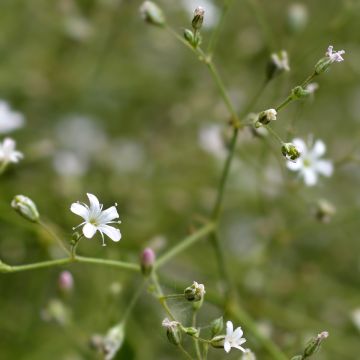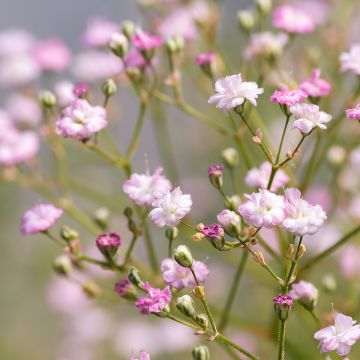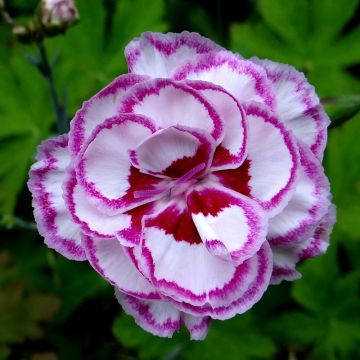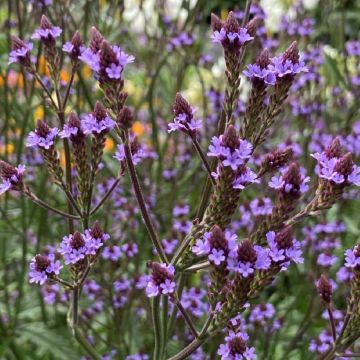

Gypsophila cerastioides


Gypsophila cerastioides


Gypsophila cerastioides


Gypsophila cerastioides


Gypsophila cerastioides
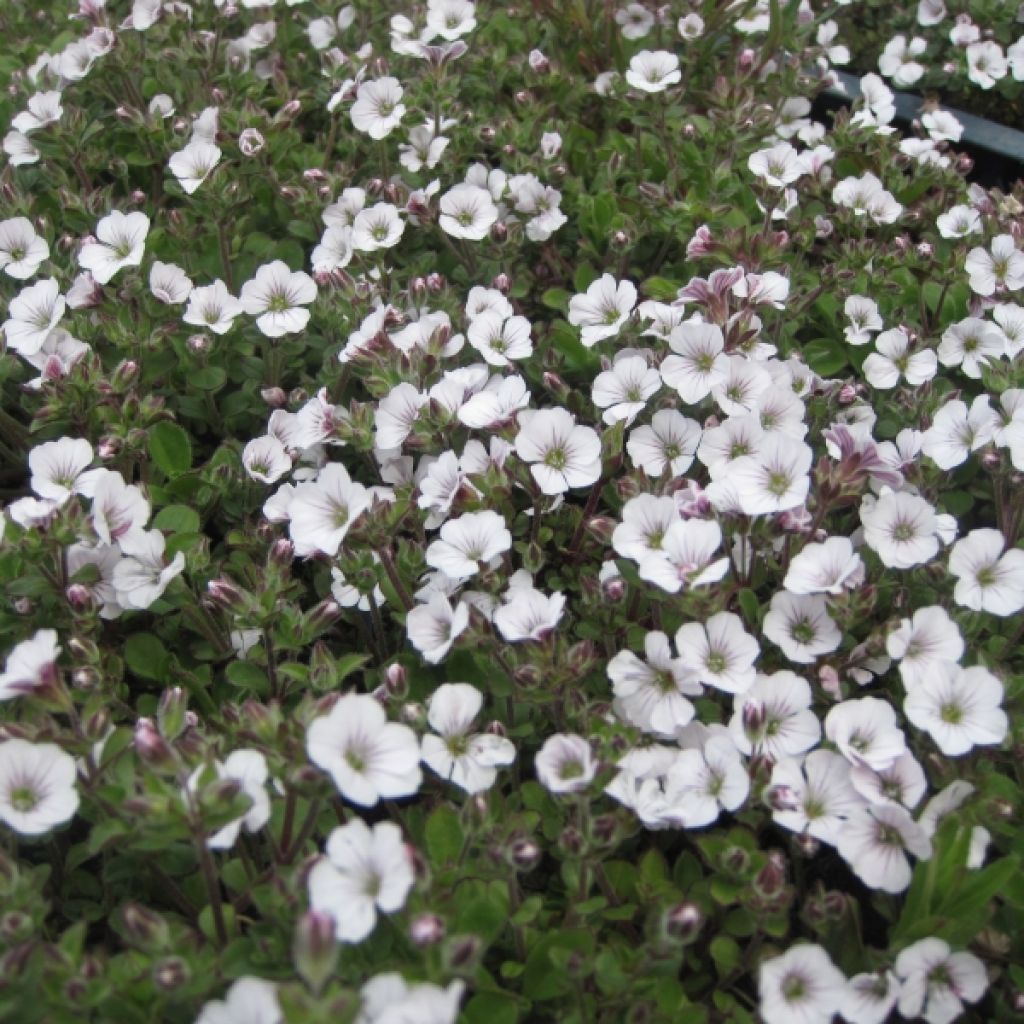

Gypsophila cerastioides


Gypsophila cerastioides
Gypsophila cerastioides
Gypsophila cerastioides
Mouse-ear gypsophila
This item cannot be shipped to the selected country
Delivery charge from €5.90
More information
Schedule delivery date,
and select date in basket
This plant carries a 12 months recovery warranty
More information
We guarantee the quality of our plants for a full growing cycle, and will replace at our expense any plant that fails to recover under normal climatic and planting conditions.
From €5.90 for pickup delivery and €6.90 for home delivery
Express home delivery from €8.90.

Does this plant fit my garden?
Set up your Plantfit profile →
Description
Gypsophila cerastioides grows in a compact cushion not exceeding 15cm (6in) in height. This cushion of beautiful round leaves can become a tapestry. The plant's growth will surprise you. From late spring to August, it is covered in small white flowers discreetly veined with purple that attract butterflies.
Gypsophila cerastioides is native to the Himalayan mountains of Pakistan, where it grows on rocky soils between 1200 and 4700m (3937 and 15420ft). This small perennial is found in mixed forests on mountain slopes, in forest meadows, near watercourses, in gravel, and in fields along roadsides. Its prostrate form is an adaptation: this arrangement of foliage protects them from cold and water loss. Like other gypsophilas, as well as carnations, this botanical species belongs to the Caryophyllaceae family.
Gypsophila cerastioides is a low-growing plant, with vegetation generally measuring less than 15cm (6in) in height and 30cm (12in) in width. Its leaves are deciduous and appear in spring. They are spatulate, green, hairy leaves, gathered in loose rosettes. The stems, leaves, and flower buds are covered in small bristles. In the height of summer, the foliage turns grey. The flowering period takes place from May to July and lasts several weeks. A short floral stem forms at the axil of each leaf: the cushion is literally covered in small flowers. Each flower is a small corolla with 5 white petals delicately veined with purple. The calyx, at the base of the flower, is also purple. After pollination by pollinating insects, the plant produces small, inconspicuous fruits containing seeds. It should be noted that the foliage can persist throughout winter in mild regions.
Gypsophila cerastioides thrives perfectly in rockeries with other small plants such as aubrietas or alyssums, but it will also grow at the forefront of a flower bed or along a path in well-drained substrate. In a pot, place it at eye level to enjoy its flowering without bending down. It looks very pretty with erodiums and blood-red perennial geraniums.
Report an error about the product description
Gypsophila cerastioides in pictures




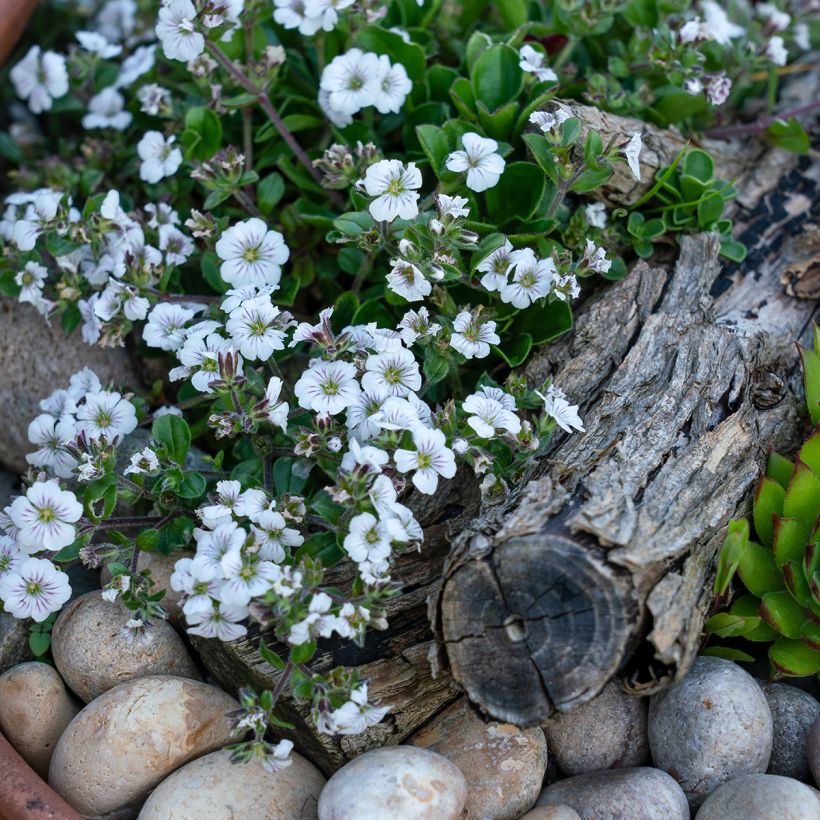

Flowering
Foliage
Plant habit
Botanical data
Gypsophila
cerastioides
Caryophyllaceae
Mouse-ear gypsophila
Himalayas
Other Gypsophila
Planting and care
Plant in well-drained substrate to help the plant tolerate wet winters. It can tolerate limestone soil and drought. If necessary, cut the dry parts in autumn or before the start of new growth in spring.
Planting period
Intended location
Care
-
, onOrder confirmed
Reply from on Promesse de fleurs
Summer flowering perennials
Haven't found what you were looking for?
Hardiness is the lowest winter temperature a plant can endure without suffering serious damage or even dying. However, hardiness is affected by location (a sheltered area, such as a patio), protection (winter cover) and soil type (hardiness is improved by well-drained soil).

Photo Sharing Terms & Conditions
In order to encourage gardeners to interact and share their experiences, Promesse de fleurs offers various media enabling content to be uploaded onto its Site - in particular via the ‘Photo sharing’ module.
The User agrees to refrain from:
- Posting any content that is illegal, prejudicial, insulting, racist, inciteful to hatred, revisionist, contrary to public decency, that infringes on privacy or on the privacy rights of third parties, in particular the publicity rights of persons and goods, intellectual property rights, or the right to privacy.
- Submitting content on behalf of a third party;
- Impersonate the identity of a third party and/or publish any personal information about a third party;
In general, the User undertakes to refrain from any unethical behaviour.
All Content (in particular text, comments, files, images, photos, videos, creative works, etc.), which may be subject to property or intellectual property rights, image or other private rights, shall remain the property of the User, subject to the limited rights granted by the terms of the licence granted by Promesse de fleurs as stated below. Users are at liberty to publish or not to publish such Content on the Site, notably via the ‘Photo Sharing’ facility, and accept that this Content shall be made public and freely accessible, notably on the Internet.
Users further acknowledge, undertake to have ,and guarantee that they hold all necessary rights and permissions to publish such material on the Site, in particular with regard to the legislation in force pertaining to any privacy, property, intellectual property, image, or contractual rights, or rights of any other nature. By publishing such Content on the Site, Users acknowledge accepting full liability as publishers of the Content within the meaning of the law, and grant Promesse de fleurs, free of charge, an inclusive, worldwide licence for the said Content for the entire duration of its publication, including all reproduction, representation, up/downloading, displaying, performing, transmission, and storage rights.
Users also grant permission for their name to be linked to the Content and accept that this link may not always be made available.
By engaging in posting material, Users consent to their Content becoming automatically accessible on the Internet, in particular on other sites and/or blogs and/or web pages of the Promesse de fleurs site, including in particular social pages and the Promesse de fleurs catalogue.
Users may secure the removal of entrusted content free of charge by issuing a simple request via our contact form.
The flowering period indicated on our website applies to countries and regions located in USDA zone 8 (France, the United Kingdom, Ireland, the Netherlands, etc.)
It will vary according to where you live:
- In zones 9 to 10 (Italy, Spain, Greece, etc.), flowering will occur about 2 to 4 weeks earlier.
- In zones 6 to 7 (Germany, Poland, Slovenia, and lower mountainous regions), flowering will be delayed by 2 to 3 weeks.
- In zone 5 (Central Europe, Scandinavia), blooming will be delayed by 3 to 5 weeks.
In temperate climates, pruning of spring-flowering shrubs (forsythia, spireas, etc.) should be done just after flowering.
Pruning of summer-flowering shrubs (Indian Lilac, Perovskia, etc.) can be done in winter or spring.
In cold regions as well as with frost-sensitive plants, avoid pruning too early when severe frosts may still occur.
The planting period indicated on our website applies to countries and regions located in USDA zone 8 (France, United Kingdom, Ireland, Netherlands).
It will vary according to where you live:
- In Mediterranean zones (Marseille, Madrid, Milan, etc.), autumn and winter are the best planting periods.
- In continental zones (Strasbourg, Munich, Vienna, etc.), delay planting by 2 to 3 weeks in spring and bring it forward by 2 to 4 weeks in autumn.
- In mountainous regions (the Alps, Pyrenees, Carpathians, etc.), it is best to plant in late spring (May-June) or late summer (August-September).
The harvesting period indicated on our website applies to countries and regions in USDA zone 8 (France, England, Ireland, the Netherlands).
In colder areas (Scandinavia, Poland, Austria...) fruit and vegetable harvests are likely to be delayed by 3-4 weeks.
In warmer areas (Italy, Spain, Greece, etc.), harvesting will probably take place earlier, depending on weather conditions.
The sowing periods indicated on our website apply to countries and regions within USDA Zone 8 (France, UK, Ireland, Netherlands).
In colder areas (Scandinavia, Poland, Austria...), delay any outdoor sowing by 3-4 weeks, or sow under glass.
In warmer climes (Italy, Spain, Greece, etc.), bring outdoor sowing forward by a few weeks.


































